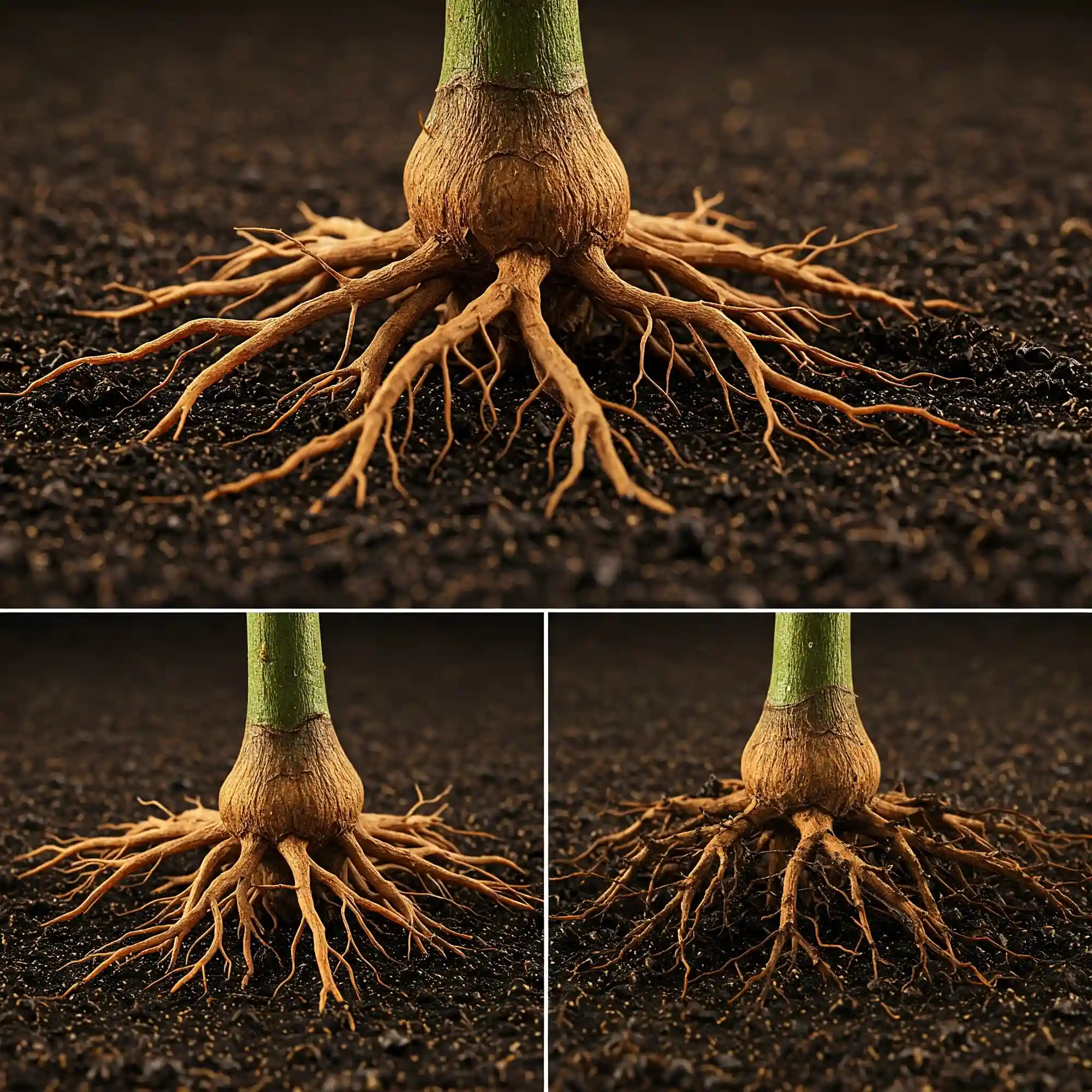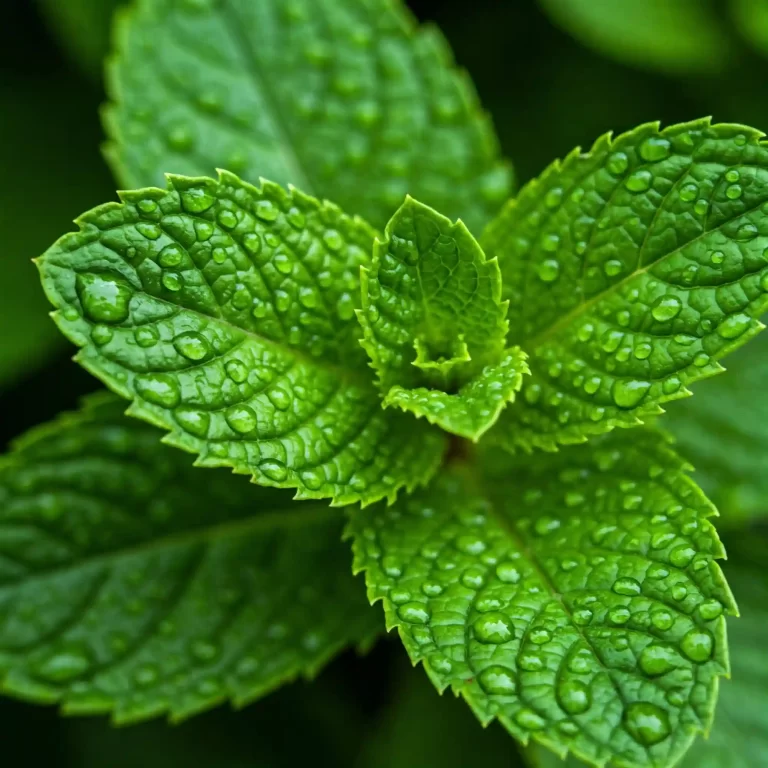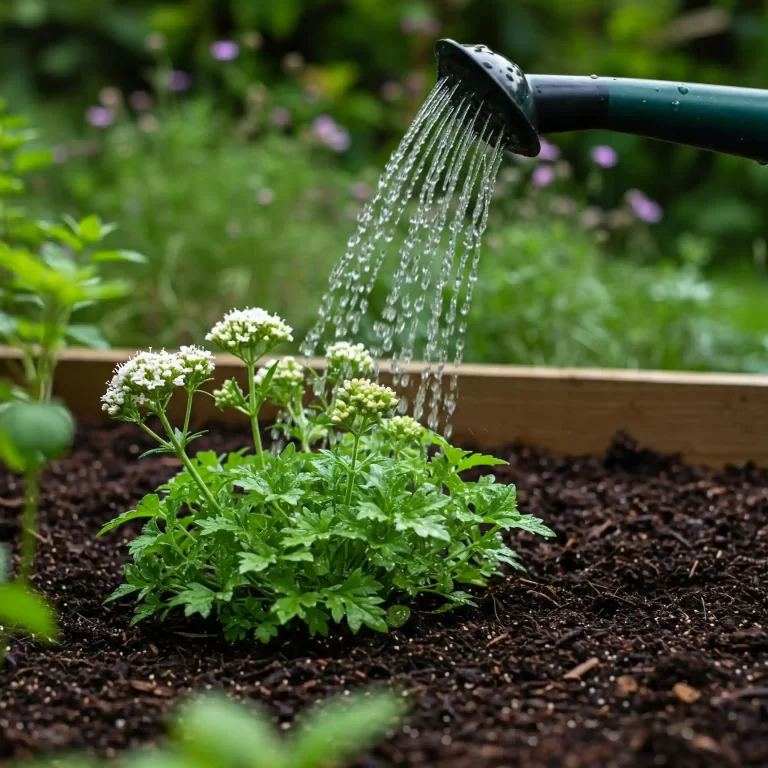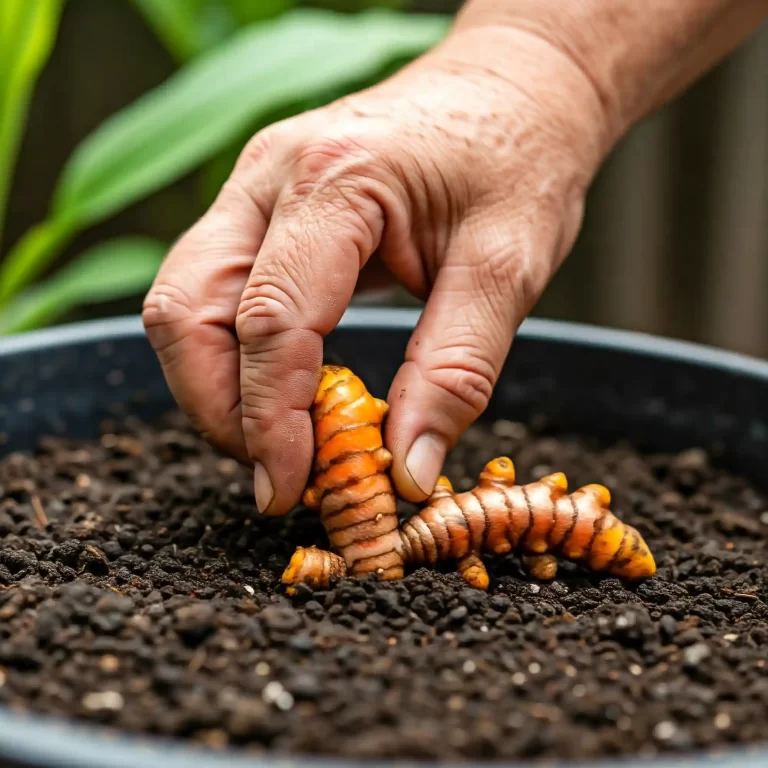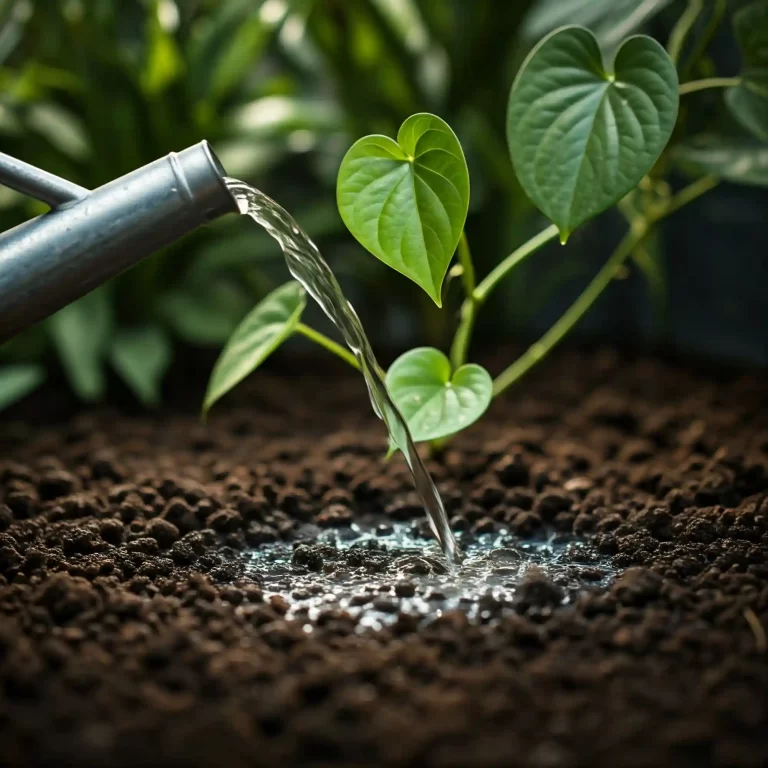Are you an adventurous gardener looking to cultivate unique and intriguing plants? Perhaps you’ve heard of Yohimbe and are curious about how to grow it yourself. I understand the allure of nurturing a plant with such a rich history and distinct characteristics. Many gardeners face the challenge of finding reliable information on cultivating less common species. This lack of clear guidance can lead to frustration and failed attempts. But don’t worry, I’m here to help. In this comprehensive guide, I’ll share my knowledge and experience on how to grow Yohimbe herbs successfully, providing you with the essential steps and insights you need to nurture this fascinating tree from seed or cutting to a thriving plant.
Understanding Yohimbe: The Basics
Let’s begin with the fundamentals. Pausinystalia johimbe (Yohimbe) is an evergreen tree native to West Africa, particularly found in countries like Nigeria, Cameroon, and Gabon. In its natural habitat, it thrives in tropical rainforests, enjoying warm, humid conditions. You’ll often find it growing in the understory, where it receives dappled sunlight. This gives us a clue about its preferred growing conditions. The tree can reach heights of up to 30 meters (approximately 100 feet) in the wild, though it will likely remain much smaller in cultivation. The bark is grayish-brown and has a characteristic furrowed texture, which is the part of the tree most traditionally used.
Historically, the bark of the Yohimbe tree has been used in traditional West African medicine for various purposes. It’s crucial to acknowledge these traditional uses exist but I want to stress that I am not making any medical claims in this article. My focus is purely on the cultivation of this fascinating species. You should always consult with qualified healthcare professionals before using any herbal remedies.
It’s also essential to address the issue of sustainability. Wild populations of Yohimbe have faced pressure due to overharvesting. Therefore, if you are considering growing Yohimbe, I urge you to source seeds or cuttings from reputable suppliers who prioritize ethical and sustainable practices. This helps protect wild populations and ensures the long-term availability of this unique tree.
Here are some key characteristics of the Yohimbe tree:
- Botanical Name: Pausinystalia johimbe
- Family: Rubiaceae
- Origin: West Africa (Nigeria, Cameroon, Gabon)
- Habitat: Tropical rainforests
- Growth Habit: Evergreen tree
- Mature Height (in the wild): Up to 30 meters (100 feet)
- Bark: Grayish-brown, furrowed
- Leaves: Simple, opposite, elliptical
- Flowers: Small, yellowish-white
- Fruit: Capsule containing winged seeds
This basic understanding of the Yohimbe tree’s origins and characteristics is crucial for successful cultivation. It gives you insight into the conditions you’ll need to replicate to help your plant thrive.
7 Essential Steps: How to Grow Yohimbe Herbs
Now, let’s dive into the practical steps of how to grow Yohimbe herbs. I’ve broken down the process into seven essential steps to make it as clear and straightforward as possible for you.
Step 1: Sourcing Yohimbe Seeds or Cuttings
The first and arguably most important step is sourcing your starting material. You have two main options: seeds or cuttings.
- Seeds: Starting from seed can be rewarding, but it can also be more time-consuming. You’ll need to find a reputable supplier who offers viable Yohimbe seeds. This can be challenging, as these seeds aren’t commonly available.
- Cuttings: Propagating from cuttings is a faster method, as you’re starting with a piece of an existing plant. However, finding a source for cuttings can be even more difficult than finding seeds.
Regardless of which method you choose, ethical sourcing is paramount. Avoid purchasing from sources that may be contributing to the overharvesting of wild populations. Look for suppliers who can demonstrate sustainable practices or offer seeds or cuttings from cultivated plants.
Step 2: Preparing the Growing Medium
Yohimbe prefers a well-draining soil that is slightly acidic. This is crucial to prevent root rot, a common problem with many plants. I’ve found that a mix of the following works well:
- Perlite: This volcanic glass improves drainage and aeration.
- Vermiculite: This mineral helps retain moisture and nutrients.
- Coco Coir or Peat Moss: These provide a base for the mix and help retain moisture.
You can create your own mix by combining equal parts of each of these components. Alternatively, you can use a commercially available potting mix designed for tropical plants. Just make sure it has good drainage.
Step 3: How to Plant Yohimbe Seeds
If you’re starting from seed, you’ll need to prepare the seeds for germination. Some sources recommend scarification (lightly scratching the seed coat) or stratification (cold treatment) to improve germination rates. I’ve had success with a simple overnight soak in lukewarm water.
Plant the seeds about half an inch deep in your prepared growing medium. Keep the soil consistently moist but not waterlogged. You can create a humid environment by covering the pot with a plastic bag or using a propagator. Place the pot in a warm location with indirect light. Germination can take several weeks or even months, so be patient.
Step 4: How to Propagate Yohimbe from Cuttings
Propagating from cuttings is a faster way to get a new plant. Select healthy, semi-hardwood cuttings from a mature Yohimbe tree. The cuttings should be about 4-6 inches long. Remove the lower leaves and dip the cut end in rooting hormone (optional).
Plant the cuttings in a moist growing medium similar to what you would use for seeds. Create a humid environment by covering the pot with a plastic bag or using a propagator. Place the pot in a warm location with indirect light. Rooting can take several weeks.
Step 5: Providing Optimal Growing Conditions
Yohimbe thrives in warm, humid conditions, similar to its native tropical rainforest environment.
- Light: Yohimbe prefers full sun to partial shade. Aim for at least 6 hours of direct sunlight per day.
- Temperature: This tree is not frost-tolerant. It prefers temperatures between 70-85°F (21-29°C).
- Humidity: High humidity is beneficial. You can increase humidity by misting the plant regularly or using a humidifier.
Step 6: Watering and Fertilizing Yohimbe Herbs
Water your Yohimbe regularly, keeping the soil consistently moist but not waterlogged. Allow the top inch of soil to dry out between waterings. During the growing season (spring and summer), you can fertilize your Yohimbe with a balanced liquid fertilizer every 2-4 weeks. Avoid over-fertilizing, as this can damage the plant.
Step 7: Ongoing Care and Maintenance
Once your Yohimbe is established, it requires minimal maintenance. Pruning is usually not necessary unless you want to shape the tree. Monitor your plant for pests and diseases and take appropriate action if necessary. If you’re growing your Yohimbe in a container, you’ll need to repot it as it grows.
Addressing Common Yohimbe Growing Challenges
Even with the best care, you might encounter some challenges when growing Yohimbe. I’ve experienced a few myself over the years, and I want to share some common problems and how you can address them. Remember, consistent observation is key. If you catch issues early, you’ll have a much better chance of helping your Yohimbe thrive.
- Root Rot: This is probably the most frequent issue I see, and it’s almost always caused by overwatering or poor drainage. Yohimbe roots need oxygen, and if they’re constantly sitting in soggy soil, they’ll start to rot. You’ll notice the leaves may start to yellow or wilt, and the plant’s overall growth will slow down.
- Solution: If you suspect root rot, the first thing you should do is check the drainage of your pot. Make sure there are drainage holes and that they’re not blocked. If the soil is waterlogged, carefully remove the plant from the pot and inspect the roots. Cut away any mushy, brown, or black roots with a sterile knife or pruning shears. Repot the plant in fresh, well-draining soil. Going forward, be sure to let the top inch or two of soil dry out between waterings.
- Pest Infestations: Like many plants, Yohimbe can be susceptible to pests, particularly aphids and mealybugs. These small insects can suck sap from the leaves and stems, weakening the plant. You’ll typically see them clustered on new growth or on the undersides of leaves.
- Solution: For minor infestations, you can often wash the pests off with a strong stream of water. For more severe infestations, I recommend using insecticidal soap or neem oil. These are natural and effective options that are safe for your plant and the environment. Be sure to follow the instructions on the product label.
- Fungal Diseases: In humid conditions, Yohimbe can sometimes be affected by fungal diseases. You might notice powdery mildew on the leaves or other fungal spots.
- Solution: Good air circulation is key to preventing fungal problems. Make sure your plant is not overcrowded and that there’s adequate airflow around it. If you see signs of fungal disease, you can treat it with a fungicide. Again, follow the instructions on the product label.
- Slow Growth Rate: Yohimbe is not a fast-growing tree. It can take several years for it to reach a significant size. Don’t be discouraged if you don’t see rapid growth. As long as your plant is healthy and you’re providing the right conditions, it will eventually grow.
- Solution: Patience is key here. Make sure you’re providing optimal growing conditions: plenty of sunlight, well-draining soil, and appropriate watering and fertilization.
- Difficulties in Germination or Rooting: Starting Yohimbe from seed or cuttings can sometimes be challenging. Germination rates can be low, and cuttings may not always root successfully.
- Solution: For seeds, try scarification or stratification to improve germination. For cuttings, use rooting hormone and maintain a humid environment. If you’re having persistent problems, try sourcing seeds or cuttings from a different supplier.
Here’s a quick reference table for common problems and solutions:
| Problem | Symptoms | Solution |
| Root Rot | Yellowing/wilting leaves, slow growth, mushy roots | Improve drainage, repot in fresh soil, reduce watering frequency |
| Pest Infestations | Insects on leaves/stems, sticky residue | Wash off pests, use insecticidal soap or neem oil |
| Fungal Diseases | Powdery mildew, fungal spots on leaves | Improve air circulation, treat with fungicide |
| Slow Growth | Minimal growth over time | Ensure optimal growing conditions (light, soil, water, fertilizer), be patient |
| Germination/Rooting Issues | Seeds not germinating, cuttings not rooting | Try scarification/stratification for seeds, use rooting hormone and humidity for cuttings, try different suppliers |
By understanding these potential challenges and their solutions, you’ll be well-equipped to handle any problems that may arise when growing your Yohimbe. I’ve found that with a little care and attention, you can successfully cultivate this unique and rewarding tree.
Frequently Asked Questions (FAQs)
I’ve compiled a list of frequently asked questions that I often receive about growing Yohimbe. I hope these answers provide further clarity and address any lingering questions you may have.
- How to grow Yohimbe herbs from seeds indoors?
- Starting Yohimbe from seeds indoors is a great option, especially if you live in a climate that doesn’t support outdoor growth year-round. You’ll want to start by soaking your seeds in lukewarm water for 24 hours. This helps to soften the seed coat and encourage germination. Then, plant the seeds in a well-draining potting mix, about half an inch deep. Keep the soil consistently moist and provide warmth and humidity. A heat mat and a humidity dome can be very helpful. Once the seedlings emerge, provide them with plenty of light, either from a sunny window or a grow light.
- What is the best soil for growing Yohimbe herbs in pots?
- Yohimbe prefers a well-draining soil that is slightly acidic. A mix of equal parts perlite, vermiculite, and coco coir or peat moss works well. You can also add some coarse sand or bark to further improve drainage. Avoid using heavy clay soils, as they can retain too much moisture and lead to root rot.
- How to protect young Yohimbe herbs from common garden pests?
- Young Yohimbe seedlings can be susceptible to pests like aphids and spider mites. Regularly inspect your plants for any signs of infestation. If you find pests, you can try washing them off with a strong stream of water or using insecticidal soap or neem oil. These are natural and effective options that are safe for your plants.
- How to grow Yohimbe herbs in a subtropical climate successfully?
- Yohimbe thrives in subtropical climates with warm temperatures and high humidity. If you live in such an area, you can grow your Yohimbe outdoors in a location that receives plenty of sunlight. Just make sure to protect it from frost during the winter months.
- What are the light requirements for growing healthy Yohimbe herbs outdoors?
- Yohimbe prefers full sun, which means at least 6 hours of direct sunlight per day. However, it can also tolerate some partial shade, especially during the hottest part of the day.
- How often should I water my growing Yohimbe herbs in summer?
- During the summer months, you’ll likely need to water your Yohimbe more frequently, especially if it’s growing in a pot. The key is to keep the soil consistently moist but not waterlogged. Allow the top inch or two of soil to dry out between waterings.
- How to propagate Yohimbe herbs from cuttings step by step?
- Select healthy, semi-hardwood cuttings from a mature Yohimbe tree. The cuttings should be about 4-6 inches long.
- Remove the lower leaves and dip the cut end in rooting hormone (optional).
- Plant the cuttings in a moist growing medium, such as a mix of perlite and vermiculite.
- Create a humid environment by covering the pot with a plastic bag or using a propagator.
- Place the pot in a warm location with indirect light.
- Rooting can take several weeks. Once the cuttings have rooted, you can transplant them into individual pots.
- Where can I ethically source Yohimbe herb seeds for growing at home?
- It can be challenging to find ethically sourced Yohimbe seeds. I recommend looking for reputable seed suppliers that specialize in rare or exotic plants. You can also try contacting botanical gardens or conservation organizations, as they may be able to provide you with information on sustainable sources.
- How long does it take to grow a mature Yohimbe Tree?
- Yohimbe is a slow-growing tree. It can take several years for it to reach maturity. Don’t be discouraged if you don’t see rapid growth. As long as you’re providing the right conditions, your Yohimbe will eventually grow into a beautiful and rewarding tree.
- Can I grow Yohimbe in colder climates?
- Yohimbe is not frost-tolerant, so it’s challenging to grow it outdoors in colder climates. However, you can grow it in a pot and bring it indoors during the winter months. Just make sure to provide it with plenty of light and humidity.
I hope these FAQs have been helpful. If you have any other questions about growing Yohimbe, please feel free to ask. I’m always happy to share my knowledge and experience with fellow gardeners.
Conclusion: Nurturing Your Own Piece of the Rainforest
Growing Yohimbe is not just about cultivating a plant; it’s about connecting with a piece of natural history. As I’ve shared my experiences with you, I hope you now feel equipped to embark on this unique gardening adventure. Remember, the key is patience and a deep understanding of the plant’s needs.
Here are some key takeaways to keep in mind:
- Ethical Sourcing: Always prioritize obtaining seeds or cuttings from reputable sources committed to sustainability.
- Replicating the Natural Habitat: Aim to recreate the warm, humid conditions of the West African rainforest.
- Consistent Care: Provide regular watering, appropriate fertilization, and protection from pests and diseases.
- Patience is Key: Yohimbe is a slow grower, so be prepared to nurture your plant over time.
While growing Yohimbe may present some challenges, the rewards are well worth the effort. You’ll have the satisfaction of nurturing a unique and historically significant plant.
I encourage you to continue exploring the fascinating world of botany and horticulture. There’s always something new to learn and discover in the garden.
Additional Resources:
I wish you all the best in your gardening endeavors!
